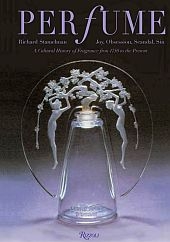Radio Interview with Richard Stamelman {The 5th Sense in the News}

There is an interview with Richard Stamelman author of Perfume: Joy, Obsession, Scandal, Sin, on the Vermont Public Radio on "All Things Considered".
You can click here to access the talk.
Two quick comments - 1) I don't think that he can generalize and say that before the 1880s there were only single-note floral fragrances....
In fact I am not sure what he means by that because early perfumery manuals reveal the existence of floral perfumes that were composed like bouquets. Eaux de colognes were not soliflores. There was a vogue for soliflores - that lasted into the 20th century by the way- but that does not mean that the pre-1880s were characterized by single-note perfumes.
2) In case you are interested in experiencing an edible perfume, you can turn to Jessica Simpson's Dessert line. Yes, getting to "chew on a perfume" is not just a dream anymore.










I haven't listened to the link yet but I have read Stamelman's book. It's quite interesting, though much too text-heavy to be a coffee-table book (try reading it in bed or in a couch, ouch!). But it's no really a perfume connoisseur's work: lots of it is really comparative literature. It's more about the written discourse on fragrances than on fragrances themselves. And even so, I would be much more interested in digging up more material in the press of the time, than in reading analyses of Baudelaire and Colette: their texts speak for themselves.
You are of course entirely right about the soliflores: I believe you're referring to Eugène Rimmel's and Septimus Piesse's books, which do indeed offer recipes for bouquets.
It's completely false. It's enough to have a look in perfumer's catalogs (sales) to see that single-flower perfumes were always a separate category. Even in 1820! Then you have the bouquet, then other complex mixtures.
One example of a succes in the early 19th cent. - Mousseline perfume (with vetiver).
I'll reserve my own comments for a formal review of the book.
Regarding the perfumery manuals I had in mind, indeed these two but earlier ones also from the 17th and 18th centuries.
A good reminder is that of the famous eau called l'Eau de Mille Fleurs (the 1000-flower water) that dates back to the 17th century (at least). The name is of course meant to be understood as a hyperbole but it was indeed made of the distilled essences of several flowers.